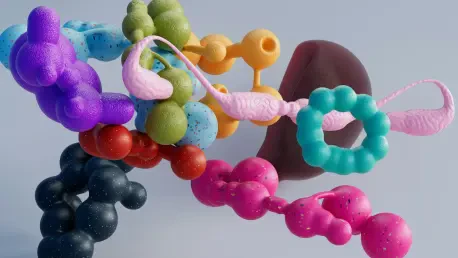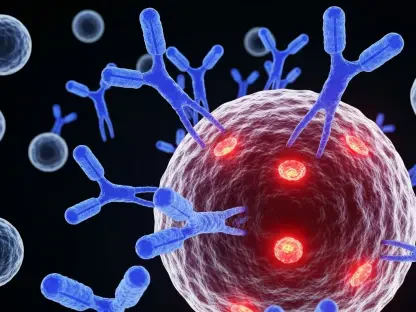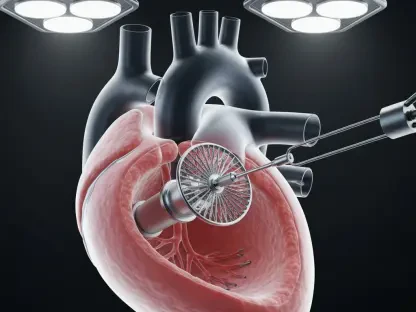In the rapidly evolving landscape of aging and regenerative medicine, innovative approaches and compounds like Cartalax peptide are attracting considerable attention. As researchers strive to deepen their understanding of the mechanisms underlying cellular aging and tissue repair, Cartalax—an intriguing synthetic tripeptide—emerges as a potential game-changer. With its unique properties and theorized influence on bioregulation, this compound could offer new avenues for extending a healthy lifespan and enhancing tissue regeneration. This article explores the scientific basis of Cartalax, its impact on aging processes, possibilities for tissue repair, and future research directions.
The Science Behind Cartalax
Structure and Composition
Cartalax is a synthetic tripeptide composed of alanine, glutamic acid, and aspartic acid (AED). Its structure closely resembles sequences found in collagen, a fundamental component of the extracellular matrix. This resemblance suggests that Cartalax could play a role in preserving tissue integrity by potentially supporting collagen synthesis. Given the importance of collagen in maintaining skin elasticity, joint health, and overall structural support within the body, Cartalax’s structural features become a focal point for researchers. Investigating how Cartalax mimics these sequences can provide insights into its ability to enhance cellular interactions and promote tissue resilience.
The study of Cartalax’s composition involves analyzing its tripeptide nature and its implications for biological processes. Alanine, glutamic acid, and aspartic acid are pivotal amino acids, each playing distinct roles in cellular functions. Alanine contributes to protein structure, glutamic acid is involved in metabolic functions as a neurotransmitter precursor, and aspartic acid aids in the synthesis of other amino acids. Collectively, these components may facilitate Cartalax’s interaction with specific proteins and enzymes, thereby influencing its bioregulatory capabilities. By examining its structural similarities to collagen and its unique composition, scientists can further explore Cartalax’s potential to transform regenerative medicine.
Mechanisms of Gene Regulation
Cartalax is hypothesized to exert influence over gene expression, a complex process that regulates cellular function and longevity. This peptide’s impact on genes related to longevity, cellular proliferation, and matrix stability garners significant interest. Important genes such as IGF-1 (Insulin-like growth factor 1) and TERT (Telomerase reverse transcriptase) are thought to be affected by Cartalax. IGF-1 is linked to growth and cellular repair, while TERT plays a critical role in maintaining telomere length, a key marker of cellular age and health. Understanding Cartalax’s influence on these genes is vital for assessing its potential in extending healthy lifespan and promoting cellular renewal.
The regulation of gene expression by Cartalax may extend to pathways involved in stress resilience. For instance, NFκB (nuclear factor kappa-light-chain-enhancer of activated B cells) is known for managing stress responses and inflammation. Cartalax’s interaction with NFκB may reveal opportunities in modulating cellular resistance to oxidative stress and inflammation, thereby contributing to stress resilience and improved health span. Scrutinizing these pathways could illuminate Cartalax’s potential for mitigating age-related cellular decline, aiding in the development of therapeutic strategies aiming to enhance longevity and regenerative capacity.
Cartalax in Cellular Aging
Mitigating Cellular Senescence
Cellular senescence—a state where cells cease to divide and contribute to aging and dysfunction—is a pivotal aspect of cellular aging. Cartalax’s role in addressing senescence markers such as p16, p21, and p53 is essential for understanding its capacity to combat aging indicators. These markers, associated with cell cycle arrest, are often elevated in aging cells, contributing to reduced regenerative ability and increased vulnerability to damage. If Cartalax can effectively modulate these senescence-associated genes, the compound could become crucial in intervention strategies aiming to prolong healthy cellular function.
Research into Cartalax’s potential benefits in counteracting cellular senescence extends to its influence on inflammation and extracellular matrix degradation. These phenomena are significant factors in aging processes, often leading to decreased tissue resilience and regenerative capacity. Cartalax’s speculated ability to modulate inflammatory responses and support matrix integrity might prevent or reduce age-related changes at the cellular level. Insights into its effectiveness could drive innovation in therapies targeting age-associated cellular dysfunctions and pave the way for developing age-defying solutions based on peptide interaction.
Supporting Extracellular Matrix Integrity
The extracellular matrix serves as the structural and biochemical support network for surrounding cells, and its integrity is vital for healthy tissue function. Cartalax’s purported interaction with fibroblasts—the cells responsible for collagen production—suggests its potential to enhance extracellular matrix maintenance. By stimulating collagen synthesis, Cartalax might slow matrix breakdown, thereby promoting tissue strength and facilitating healing. Given the widespread impact of matrix degradation on organ resilience and tissue regeneration, Cartalax’s role in preserving matrix vitality is paramount in studies focused on counteracting aging effects.
Investigations into Cartalax’s benefits extend to its potential to support wound healing and tissue repair. Fibroblasts not only produce collagen but also orchestrate tissue reconstruction following injury. Cartalax’s interactions might optimize fibroblast functions, leading to improved healing processes and greater matrix restoration. By fortifying the core structure of tissues, Cartalax might reduce deterioration linked to age-related ailments and boost regenerative abilities essential for sustaining health. Such insights could inform future regenerative strategies aimed at preserving extracellular matrix integrity in various bodily tissues.
Application in Tissue Repair
Role in Tissue Regeneration
Tissue engineering and regenerative medicine explore how synthetic compounds can accelerate tissue repair, and Cartalax presents promising possibilities in this domain. Its role in collagen synthesis is particularly pertinent to musculoskeletal regenerative research, where cartilage and bone repair rely heavily on robust collagen production. Cartalax may offer innovative solutions by supporting rapid tissue reconstruction, potentially transforming approaches to accommodating bone injuries and degenerative cartilage conditions.
Beyond musculoskeletal applications, Cartalax’s potential extends to regenerative therapies targeting diverse conditions requiring enhanced cellular repair. Insights into Cartalax’s effectiveness in supporting cellular renewal, restoring function, and accelerating healing might lead to novel therapeutic strategies designed to address injuries and degeneration. This synthetic peptide’s ability to promote collagen synthesis and matrix integrity poses potential for broad applications, from skin rejuvenation to regenerating internal tissues affected by disease or trauma.
Modulation of Inflammatory Responses
Inflammatory pathways are crucial for cellular responses to injury, playing significant roles in acute and chronic conditions. Cartalax’s speculated interaction with pathways such as NFκB highlights its potential in inflammatory response research. If Cartalax effectively modulates these pathways, it could provide new insights into managing inflammation—from acute injuries to chronic diseases—by influencing cytokine expression and immune system signaling.
The prospect of using Cartalax to modulate inflammatory responses opens new avenues for developing treatments for a range of conditions. From autoimmune disorders characterized by chronic inflammation to injuries where swift healing is paramount, understanding Cartalax’s impact on inflammation could revolutionize therapeutic approaches. Exploring its utilization might lead to breakthroughs in addressing inflammation-linked diseases, ultimately contributing to enhanced health outcomes by minimizing inflammatory processes without compromising the natural healing response.
Cartalax in Stress Resilience
Addressing Oxidative Stress and Longevity
Oxidative stress and its repercussions on cellular health are primary factors affecting aging and longevity. Cartalax emerges as a potential influencer by modulating defense mechanisms against oxidative damage. Through interactions with pathways that govern mitochondrial dynamics and cellular resilience, Cartalax might enhance protection against free radicals, preserving cellular function and promoting longevity. Researchers are focused on assessing how Cartalax’s involvement in these pathways might contribute to improved cellular health and extend lifespan.
The ongoing exploration into Cartalax’s effects on oxidative stress encompasses its possible role in safeguarding mitochondrial integrity. Mitochondria are central to cellular energy production and metabolic regulation, and their dysfunction contributes to aging and diseases. Cartalax’s interactions may reveal ways to optimize mitochondrial functioning, advocating its role in supporting cellular health and longevity. Evaluating these possibilities is crucial for understanding how Cartalax can mitigate stress factors impacting cellular vitality and aid in developing comprehensive longevity-driven interventions.
Gaps and Future Research Directions
In the dynamic field of aging and regenerative medicine, new approaches and compounds like the Cartalax peptide are garnering significant interest. As scientists work to unravel the intricacies of cellular aging and the body’s ability to repair tissues, Cartalax appears as a compelling synthetic tripeptide that might revolutionize these areas. Distinguished by its distinct properties and proposed effects on biological regulation, Cartalax could potentially open up new pathways for prolonging a healthy lifespan and boosting the body’s natural tissue regeneration capabilities.
This compound is believed to impact cellular processes in a way that supports delayed aging and enhanced repair mechanisms. Researchers are particularly curious about how Cartalax might interact with various biological pathways to influence the aging process and support tissue renewal. As the scientific community continues to investigate Cartalax, its role in aging and tissue repair is expected to become clearer, paving the way for novel therapeutic strategies. The potential of Cartalax is gaining momentum, prompting further research to uncover its full capabilities and possible applications in extending a healthy human lifespan.









